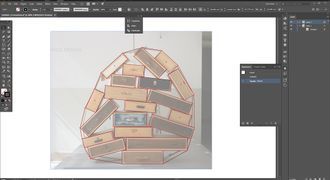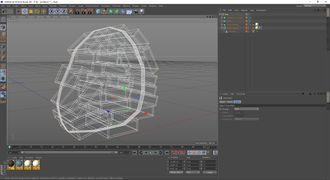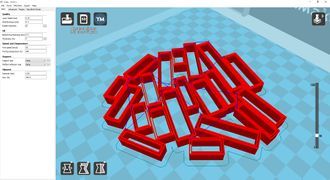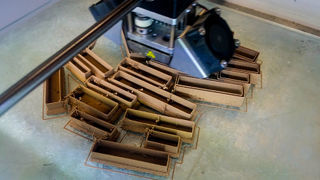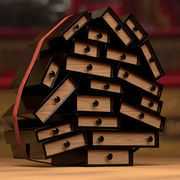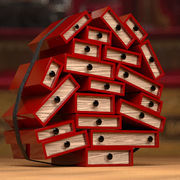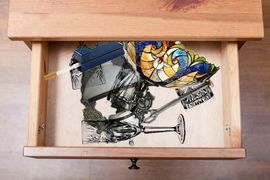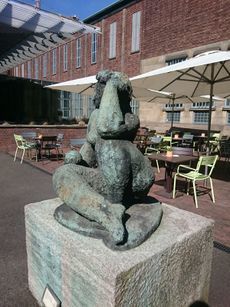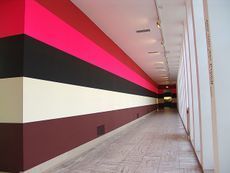Difference between revisions of "User:Fuutsie"
| Line 2: | Line 2: | ||
{| role="presentation" class="wikitable mw-collapsible mw-collapsed" | {| role="presentation" class="wikitable mw-collapsible mw-collapsed" | ||
| − | | <strong> | + | | <strong>Appropriation, the early research</strong> |
|- | |- | ||
|The quickest explanation is repurposing an object/artpiece as is to give it another function or meaning. This can be as simple as turning a table upside down, but can also exist in the way of Pablo Picasso’s “Guitar, Sheet music and Wine glass, where existing pieces come together to form a new work. This way a NEW object is created. | |The quickest explanation is repurposing an object/artpiece as is to give it another function or meaning. This can be as simple as turning a table upside down, but can also exist in the way of Pablo Picasso’s “Guitar, Sheet music and Wine glass, where existing pieces come together to form a new work. This way a NEW object is created. | ||
| Line 18: | Line 18: | ||
Everything has to come from somewhere: Linking artists/designers interpretations throughout his life and combining this into a new piece. (David T. Ansted - The stone book of nature) This way everything made, copied or not should be interpreted as a new work. You can’t copy something that doesn’t exist. Take “Ceci n’est pas une pipe” of Ren’e Magritte. In the same way you could perfectly copy an artwork, but the function and meaning change: If you repaint/reproduce Victory Boogie Woogie from Mondriaan, it isn’t about Manhattan or the music on the streets, but more about Piet Mondriaan and the fame behind his name. | Everything has to come from somewhere: Linking artists/designers interpretations throughout his life and combining this into a new piece. (David T. Ansted - The stone book of nature) This way everything made, copied or not should be interpreted as a new work. You can’t copy something that doesn’t exist. Take “Ceci n’est pas une pipe” of Ren’e Magritte. In the same way you could perfectly copy an artwork, but the function and meaning change: If you repaint/reproduce Victory Boogie Woogie from Mondriaan, it isn’t about Manhattan or the music on the streets, but more about Piet Mondriaan and the fame behind his name. | ||
| − | |||
| + | Some interesting questions I did not go on with for now: | ||
| − | Type of person that does it with intention of gaining profit | + | Why do we not like being copied by other people? |
| − | + | Does the intention of copying change the ethics of appropriation? | |
| + | Type of person that does it with intention of gaining profit? | ||
| − | |||
| − | |||
https://www.artspace.com/magazine/art_101/art_market/art_101_appropriation_art-5550 | https://www.artspace.com/magazine/art_101/art_market/art_101_appropriation_art-5550 | ||
| − | + | ||
|} | |} | ||
Revision as of 19:55, 9 May 2018
| Appropriation, the early research |
| The quickest explanation is repurposing an object/artpiece as is to give it another function or meaning. This can be as simple as turning a table upside down, but can also exist in the way of Pablo Picasso’s “Guitar, Sheet music and Wine glass, where existing pieces come together to form a new work. This way a NEW object is created.
Appropriation also has a bad aftertaste in some fields, as it is also connected with copyright infringement. This happens when someone takes the work without consent or approval of the original owner. When is it a new work? When is the original function (or meaning) new enough to be classified as original? Everything has to come from somewhere: Linking artists/designers interpretations throughout his life and combining this into a new piece. (David T. Ansted - The stone book of nature) This way everything made, copied or not should be interpreted as a new work. You can’t copy something that doesn’t exist. Take “Ceci n’est pas une pipe” of Ren’e Magritte. In the same way you could perfectly copy an artwork, but the function and meaning change: If you repaint/reproduce Victory Boogie Woogie from Mondriaan, it isn’t about Manhattan or the music on the streets, but more about Piet Mondriaan and the fame behind his name.
Why do we not like being copied by other people? Does the intention of copying change the ethics of appropriation? Type of person that does it with intention of gaining profit?
https://www.artspace.com/magazine/art_101/art_market/art_101_appropriation_art-5550
|
| Process from stealing to making |
ContentsStealing and recreating the workSince photo reconstruction does not work well with straight objects it would be faster and higher quality to recreate it by modeling by hand. Contextualise the objectImagining the closet in different scenario's, finally settling for the concert hall, to help visualizing it as an instrument. https://youtu.be/46w99bZ3W_M Creating the objectSince I had the 3D model I printed the model. I used a filament with wood for this. For the working appropriated model I used wood since it had to be sturdier to endure experimenting. I used common, but also object specific to certain memories of mine. For example I used paperclips to create rattle, but the Opel hubcaps are really specific to the memories of my father.
Soo... what's nextNow the project itself is finished, I can think of how the project could live on. I am thinking of making a soundpiece with the current drawers and add many more. This piece could be performed or recorded. But to give an extra dimension to the recording I can also imagine it being presented while playing on its own (almost like an organ ) This way you get to experience the real sound, which can't be reproduced by speakers. 
|
| Contrafactual Past |
An italian woman preparing dinner on a hot day.The day the god Fortuna, god of fortune, fate and fertility leaves and makes place for Anteros, god of love and passion, women prepared a festive meal to celebrate the occasion. This day is often referred to as “giorno di riposo”, Literally translated to “Day of rest”. Where usually the locals of Acri (south of Italy) wore fabulous clothing to praise the gods, Anteros was praised by a day of openness and freedom. Since this day was not pinned by a specific date but determined by the harvest of tomatoes it was commonly associated by the refreshing of the soil. To prevent staining the soil with “unnatural” clothing, women and children were not allowed to wear clothes on the fields. The end of the harvest was celebrated by a grand meal. Pasto Prandi (Meal of rest) was a dish where green tomatoes were peeled and boiled with spices, and wine. This statue is a snapshot of a woman peeling tomatoes in preparation of pasto prandi. It is thought that this was originally made by an artist in Cosenza. Later was found out it was |
| Present/my work |
You can't lay down your memoriesA cabinet: You are able to put stuff in (taking in), take things out (remembering). In the space between these two actions the cabinet is just there fulfilling its destiny. The opening and closing of the drawers comes paired with a noise: A slam, a wham or just a scraping sound because it is worn out. It is the quality of the memory that defines its sound. This quality is the part that I want to appropriate. The noise, the force, the effort needed to remember and store information, not only in a drawer, but also in the mind.
But.... how??Where the focus on the original object lays at the chaotic cluster of memories, defined by the type of drawer, I want to use the sound made by the drawer to define the memories. Since audio is a strong key to remembering life events. Besides that it plays an important part in the storage of cultural heritage. Your heritage defines you. Your memories define you. Because everyone is different, everyone has his own sound, because the memories stored will never be the same as oneother's.
|
| Speculative Future |
Visualization of code example 2aLines, perspective, all things that we have to consider while programming the virtual world. To keep not only the mind, but also the physical human in contact with the program we make an artificial stage, where the tactile connection correlates with the mental image of the program. [VR Crossdimension] Combining these parameters makes us able to guide people the right way and happy in their Lifepod: Giving them the feeling of mobility.
Keep in mind to strictly use our code as the person will feel confused and/or become aware of the simulation. When this happens serious actions will be taken to prevent this event recurring, and thus disqualifying the responsibles from their position. |

